This article was medically reviewed by Janice Litza, MD. Dr. Litza is a board certified Family Medicine Physician in Wisconsin. She is a practicing Physician and taught as a Clinical Professor for 13 years, after receiving her MD from the University of Wisconsin-Madison School of Medicine and Public Health in 1998.
There are 7 references cited in this article, which can be found at the bottom of the page.
This article has been viewed 47,731 times.
Insulin resistance is when your body becomes less effective at utilizing insulin; it starts out as a gradual problem, and becomes more severe with time. Over a number of years, insulin resistance can lead to many chronic health problems such as diabetes, elevated lipid levels, and an increased risk of heart disease. Insulin resistance can be tested for indirectly by performing blood sugar tests, lipid tests, and by evaluating for clinical signs and symptoms that may correlate to insulin resistance.
Steps
Performing Blood Sugar Tests
-
1Have your fasting glucose measured.[1] It is very challenging for physicians to test for insulin resistance directly; therefore, the most common way in which it is tested for is indirectly, by assessing other quantities that may be indicative of a state of insulin resistance. One key indication that you may be insulin resistant is if your fasting glucose level is elevated.
- You will need to get a form from your family doctor (or another physician) sending you for a "fasting blood test." A fasting blood test is no different than a regular blood test, other than that it requires that you do not eat or drink (except for water) for eight hours prior to the blood test.
- Most people find it easiest to fast (i.e. to refrain from eating and drinking) overnight and to have the blood test first thing in the morning.
- A normal fasting glucose measurement is less than 100mg/dL.
- If your fasting glucose is between 100–125 mg/dL, you have "pre-diabetes" and likely have insulin resistance.
- If it is above 126 mg/dL on two separate tests, you will be diagnosed with diabetes (and it is key to understand that the diagnosis of diabetes is a more severe form of insulin resistance).
-
2Receive an oral glucose tolerance test. In addition to a blood test checking your fasting glucose measurement, your doctor may advise that you receive an oral glucose tolerance test. This test also requires that you fast (do not eat for eight hours prior to the test). The difference is that the oral glucose tolerance test takes between one and three hours.[2]
- This is a routine test for pregnant women to screen for gestational diabetes.
- Your glucose level is measured prior to the start of the test.
- You are then instructed to consume a beverage high in sugar, and your glucose levels will continue to be monitored at set time intervals after that to observe how your body manages the glucose load in your bloodstream.
- If your body is able to effectively utilize insulin (the hormone that transports glucose from the bloodstream inside cells where it is needed), your results will be normal.
- On the other hand, if your body has developed insulin resistance, you will not be able to quickly and effectively transport the glucose from your bloodstream into your cells, and this will show up as an elevated glucose level in your test results.
- A glucose result between 140–200 mg/dL on your oral glucose tolerance test is indicative of "pre-diabetes" and likely some degree of insulin resistance.
- A glucose result over 200 mg/dL on your oral glucose tolerance test is diagnostic of diabetes, which is a more severe form of insulin resistance.
Advertisement -
3Get a simple blood test to have your HbA1c measured.[3] One of the newer tests that is now available to evaluate the amount of glucose in your bloodstream is called HbA1c (hemoglobin A1c). It gives doctors a three-month snapshot of how your sugar levels have been (i.e. it reflects the average amount of glucose in your bloodstream over the past three months).
- Doctors will usually use the A1c blood test or glucose tolerance test, but not both.
- It is a highly useful test because it is the only one that offers a long-term profile of your body's ability to process glucose, which reflects back to your body's ability to effectively use insulin.
- If you have insulin resistance, your HbA1c value will be elevated due to your impaired ability to manage the glucose load in your bloodstream.
- A normal HbA1c is less than 5.6%.
- An HbA1c value between 5.7–6.4% is indicative of "pre-diabetes" and suggestive of insulin resistance.
- An HbA1c value above 6.5% is diagnostic of diabetes, which is a later stage and more severe form of insulin resistance.
Performing Lipid Tests
-
1Have your LDL cholesterol measured. LDL cholesterol is commonly known as "bad cholesterol;' in other words, as the name implies, it is not the type of cholesterol you want to have high levels of. LDL cholesterol can be evaluated in a simple blood test, which you can receive a request for from your family doctor. This is also a fasting blood test, requiring that you do not eat or drink (other than water) for 12 hours prior to the test.
- An elevated LDL cholesterol reading (above 160 mg/dL) also correlates to a significantly higher risk of having insulin resistance.[4]
- As such, LDL cholesterol is an indirect way of assessing your probability of having insulin resistance.
-
2Get your triglyceride levels tested. Elevated triglyceride levels are also a risk factor correlated to insulin resistance. Normal triglyceride levels are below 150 mg/dL, and borderline levels are between 150–200 mg/dL. If your triglycerides are above 200 mg/dL, you are likely to have insulin resistance.[5]
- You will likely receive all of the lipid tests — LDL cholesterol, total cholesterol, triglycerides, and HDL cholesterol — at one time, as part of a "lipid panel."
- Therefore, it is simple to have done as you will only need to go for one blood test to have each of your lipid values assessed, which in turn will provide valuable information as to the probability of you having insulin resistance.
-
3Evaluate your HDL cholesterol.[6] HDL cholesterol, unlike LDL cholesterol, is a "good cholesterol" — it is one you want to have high levels of because it performs beneficial functions in the body. People with insulin resistance often have lower than normal HDL cholesterol levels; therefore, your HDL cholesterol results on your blood tests will provide insight as to your probability of having insulin resistance.
- Normal HDL cholesterol typically falls between 40–50 mg/dL for men and 50–59 mg/dL for women.
- If your HDL cholesterol is below 40 mg/dL for men and 50 mg/dL for women, you have a significant risk for having insulin resistance.
Diagnosing Insulin Resistance
-
1Talk to your doctor about all of your test results to draw a conclusion about insulin resistance. It is the summation of your laboratory test results that determines your likelihood of having insulin resistance. Because insulin resistance is tested for by a variety of indirect measurements (such as testing blood glucose levels as well as blood lipid levels), it is the combination of these various test results that leads to the ultimate diagnosis of insulin resistance.
- If you have elevated blood glucose levels, elevated LDL cholesterol and triglycerides, and reduced HDL cholesterol, you most likely have insulin resistance.
- It is important to book an appointment with your doctor to go over all of your test results. Your doctor is the one with the medical training and experience to officially make the diagnosis of insulin resistance. Your doctor can read and interpret the test results, and together you can come up with a treatment plan if necessary.
-
2Evaluate for signs and symptoms of insulin resistance. In addition to laboratory tests, there are also signs and symptoms that may be suggestive of insulin resistance. These include:[7]
- Obesity
- Increased waist circumference
- Increased thirst
- Increased urination
- Fatigue
- Blurry vision or other vision problems
-
3Get screened for insulin resistance.[8] You may be wondering: Who should get tested for insulin resistance? If you have clinical signs and symptoms of insulin resistance (described above), you should speak to your doctor about getting tested.
- If you are over 45, you are eligible for routine screening of your blood sugars (one of the indirect ways to assess for insulin resistance). If your results are normal upon initial testing, you are eligible for repeat screening tests every three years.
- You are also eligible for screening tests for insulin resistance if you have any of the following risk factors: a BMI (body mass index) greater than 25 (i.e. if you are overweight), a sedentary lifestyle, high blood pressure, elevated cholesterol, a history of heart disease, a history of PCOS (polycystic ovarian syndrome), if you have a close relative who has been diagnosed with diabetes, and/or if you have delivered a baby who weighed over 9 pounds at the time of birth (a larger than normal baby is an indication that you may have poor blood sugar control).
-
4Talk to your doctor about the risks that insulin resistance can predispose you to. People may ask: Why do we worry about insulin resistance? The answer is that insulin resistance is part of a constellation of health issues that very often go hand-in-hand. If you have one, you are more likely to have (or to develop) the others, because the risk factors for each of these ongoing health conditions are very similar and often overlapping. It is worth talking to your doctor about health conditions that insulin resistance increases your risk of having, including [9]
- Heart disease
- High blood pressure
- Diabetes
- Liver disease
- Polycystic ovarian syndrome (PCOS)
References
- ↑ http://www.mayoclinic.org/diseases-conditions/diabetes/basics/tests-diagnosis/con-20033091
- ↑ https://www.nlm.nih.gov/medlineplus/ency/article/003466.htm
- ↑ https://www.nlm.nih.gov/medlineplus/ency/article/003640.htm
- ↑ https://www.cdc.gov/diabetes/basics/insulin-resistance.html
- ↑ https://www.nlm.nih.gov/medlineplus/ency/article/003493.htm
- ↑ https://medlineplus.gov/hdlthegoodcholesterol.html
- ↑ https://www.ncbi.nlm.nih.gov/books/NBK507839/
- ↑ http://www.mayoclinic.org/diseases-conditions/diabetes/basics/tests-diagnosis/con-20033091
- ↑ https://www.ncbi.nlm.nih.gov/books/NBK507839/
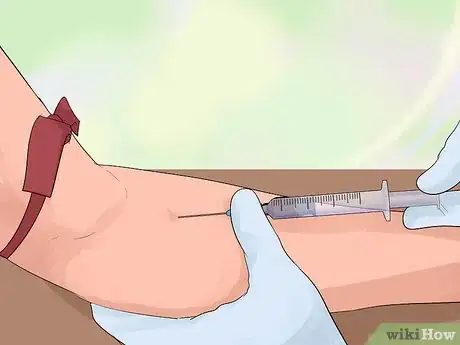

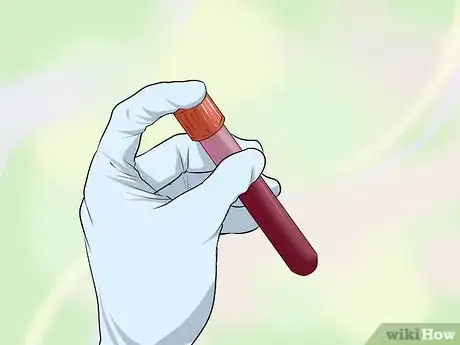

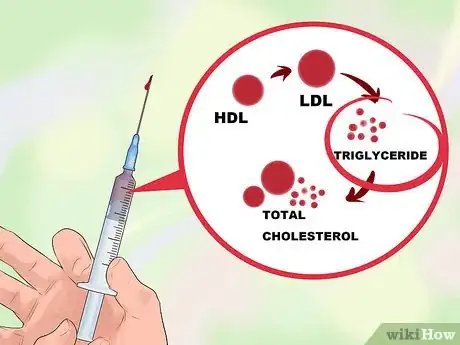
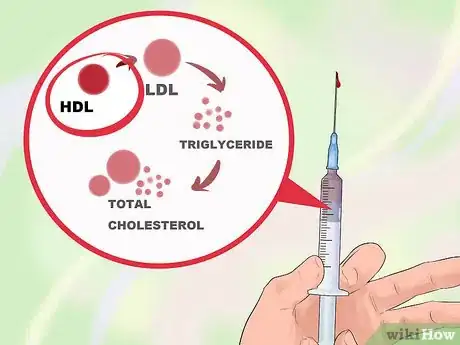









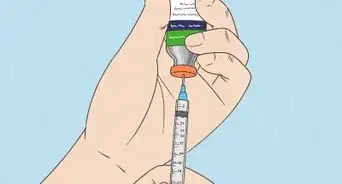
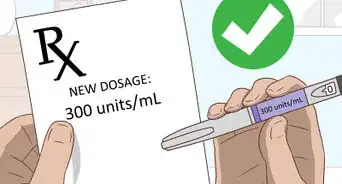




















































Medical Disclaimer
The content of this article is not intended to be a substitute for professional medical advice, examination, diagnosis, or treatment. You should always contact your doctor or other qualified healthcare professional before starting, changing, or stopping any kind of health treatment.
Read More...